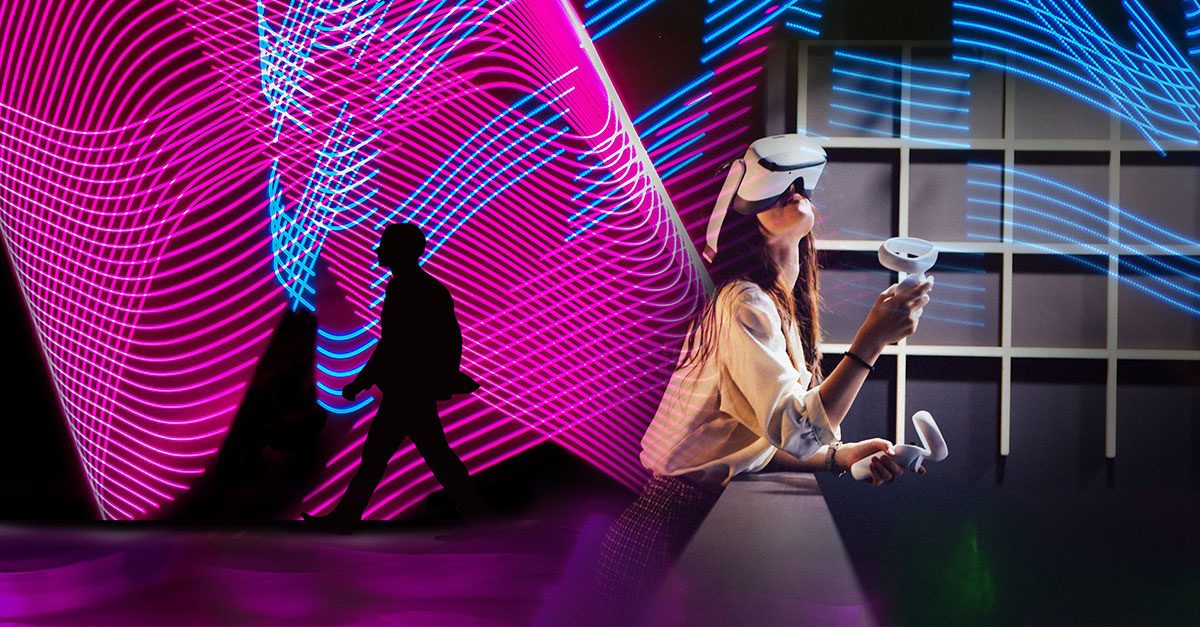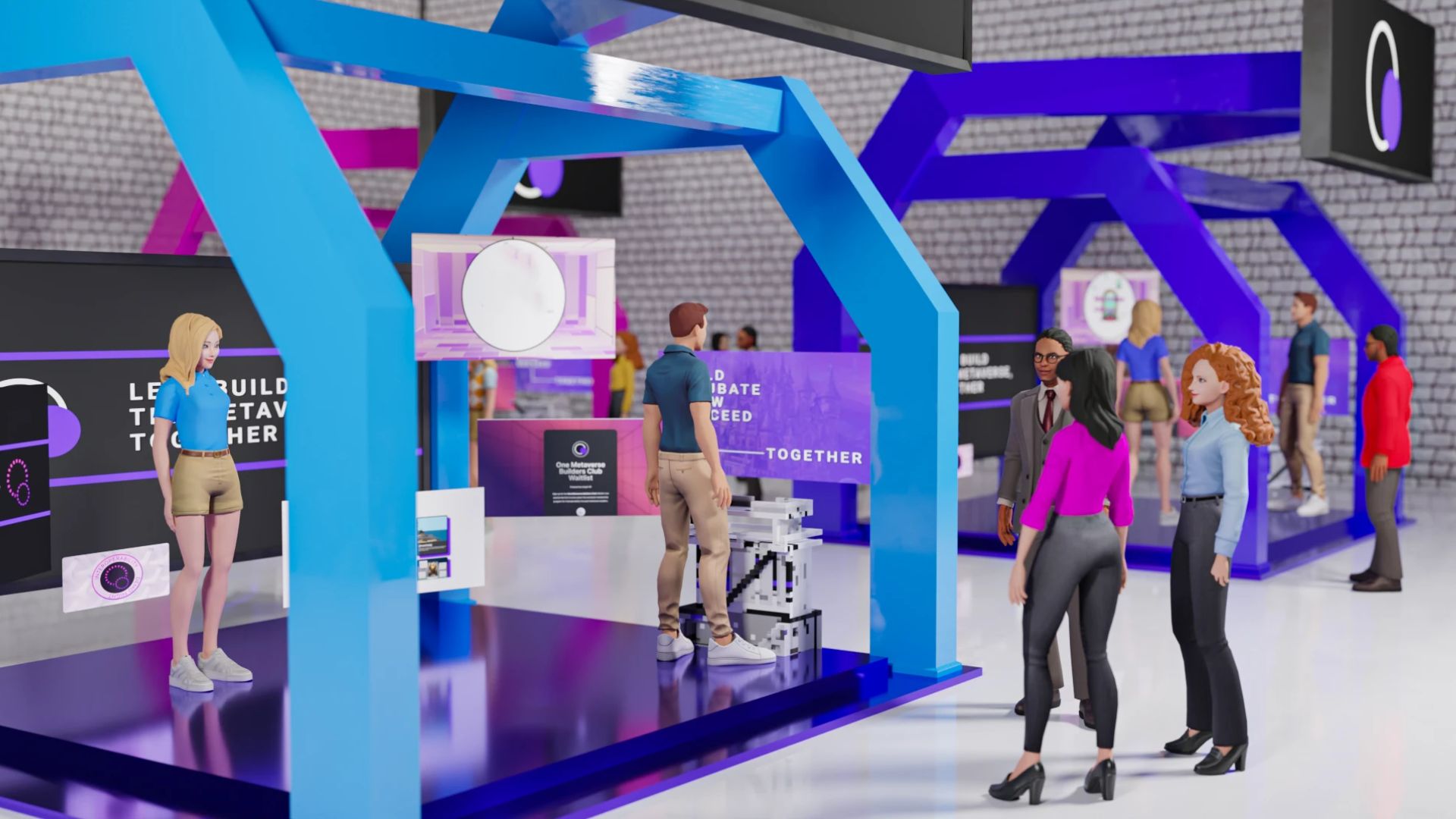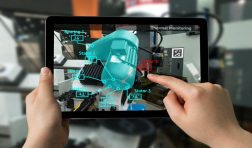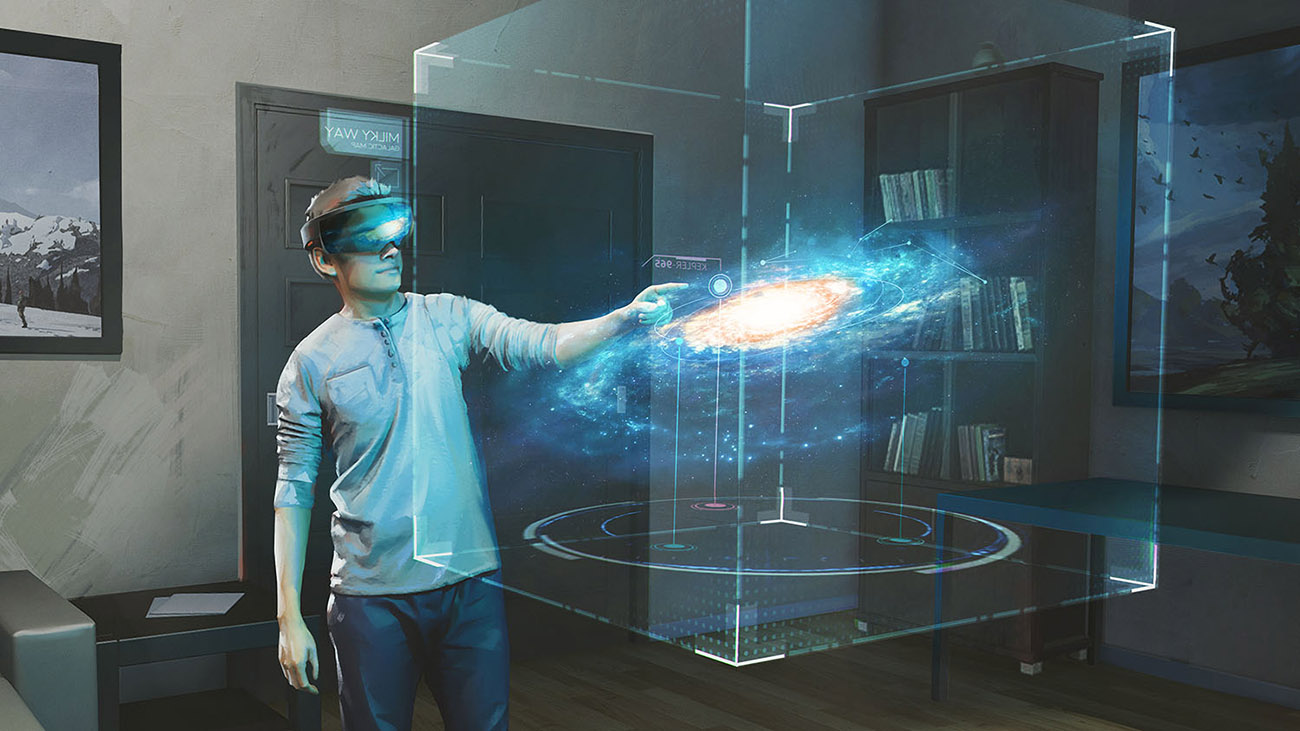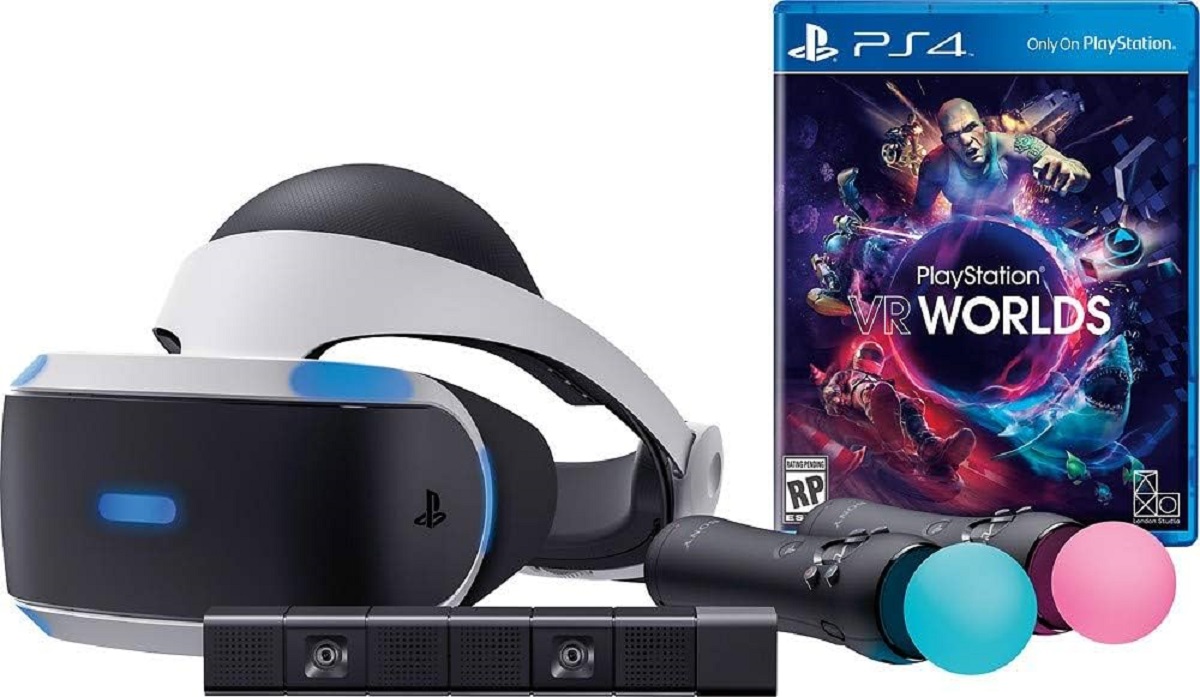Introduction
Virtual reality (VR) is a rapidly evolving technology that has garnered significant attention in recent years. With its promise of transporting users to immersive digital worlds, VR holds the potential to revolutionize various industries, including gaming, entertainment, education, healthcare, and more. The concept of virtual reality, where users can experience and interact with computer-generated environments that mimic the real world, has fascinated people for decades.
The idea of VR can be traced back to the 1960s when early pioneers like Ivan Sutherland and Douglas Engelbart laid the groundwork for immersive experiences. However, it is only in the past decade that advancements in hardware, software, and graphics technology have brought virtual reality closer to the mainstream.
Today, virtual reality is no longer limited to science fiction or niche applications. With the emergence of high-quality headsets like Oculus Rift, HTC Vive, and PlayStation VR, along with the accessibility of smartphones and affordable VR devices, the barriers to entry have significantly diminished. This has led to an explosion of content and experiences that cater to a broad range of users, from gaming enthusiasts to professionals in various fields.
The key advantage of virtual reality lies in its ability to provide users with a sense of presence and immersion. By wearing a VR headset, users can be transported to virtual worlds where they can explore, manipulate objects, and interact with the surroundings. The technology allows for a level of engagement and realism that traditional media cannot match.
Virtual reality has already made significant strides in gaming, where players can step into the shoes of their favorite characters and experience virtual environments in a whole new way. Beyond entertainment, VR is being utilized in areas such as training simulations, architectural design, medical research, and therapy.
However, despite the progress and promise of virtual reality, there are still challenges and limitations that need to be addressed. One of the key hurdles is the high cost of entry, with high-end VR setups requiring powerful hardware that may be out of reach for some consumers. Additionally, motion sickness and other discomforts associated with extended VR use remain areas of concern.
Despite these challenges, virtual reality is poised for further advancements and broader adoption in the coming years. As technology continues to improve, and more developers and industries harness the potential of VR, we can anticipate exciting developments and a more seamless, accessible virtual reality experience for everyone.
The History of Virtual Reality
The concept of virtual reality can be traced back to the 1960s when computer scientists and engineers began exploring ways to create immersive, artificial environments. One of the earliest pioneers in this field was Ivan Sutherland, who developed the “Sword of Damocles” in 1968, considered to be one of the first head-mounted displays (HMDs) for virtual reality. This early prototype laid the foundation for future advancements in the field.
Throughout the 1970s and 1980s, virtual reality continued to gain momentum, with researchers and technologists experimenting with various hardware and software solutions. Nonetheless, the technology remained primarily confined to academic and military circles due to its high cost and complexity.
In the 1990s, virtual reality experienced a surge in popularity, thanks in part to the release of affordable consumer-grade devices such as the Virtual Boy by Nintendo. However, the quality and experience of these early consumer VR products fell short of expectations, leading to a decline in interest and investment in the technology.
It wasn’t until the 2010s that virtual reality witnessed a renaissance, propelled by advancements in graphics processing power, motion tracking, and display technology. In 2012, a breakthrough moment occurred with the successful Kickstarter campaign for the Oculus Rift headset, helmed by Palmer Luckey. The Oculus Rift brought renewed attention to virtual reality and sparked a wave of interest and innovation in the industry.
Since then, major players like HTC, Sony, and Google have joined the virtual reality market, releasing their own headsets and peripherals. These devices offer improved visual and spatial tracking capabilities, providing users with a more immersive and realistic experience.
Additionally, the development of smartphones has played a significant role in the democratization of virtual reality. With the advent of mobile VR platforms like Google Cardboard and Samsung Gear VR, everyday smartphone users gained access to affordable and portable VR experiences.
Today, virtual reality has evolved beyond gaming and entertainment. It has found applications in various industries, including healthcare, education, design, and training simulations. Medical professionals can use VR to simulate surgeries, architects can visualize their designs in 3D, and educators can create immersive learning environments for students.
The history of virtual reality is filled with breakthroughs, setbacks, and moments of innovation. As technology continues to advance, VR is set to become an increasingly integral part of our everyday lives, shaping how we work, learn, play, and interact with the digital world.
Current State of Virtual Reality Technology
Virtual reality technology has made significant strides in recent years, bringing us closer to the promise of immersive and realistic digital experiences. The current state of virtual reality encompasses both hardware and software advancements that have transformed the way we interact with and perceive virtual environments.
At the forefront of virtual reality are head-mounted displays (HMDs), which have become more accessible and affordable for consumers. Leading manufacturers such as Oculus, HTC, and Sony have released high-quality VR headsets that offer impressive visual fidelity and tracking capabilities. These headsets utilize technologies like OLED displays, high refresh rates, and advanced optics to create a seamless and immersive experience for users.
In addition to HMDs, virtual reality peripherals such as motion controllers have become integral components of the VR ecosystem. These controllers allow users to interact with and manipulate virtual objects in a more natural and intuitive way. With precise tracking and haptic feedback, users can feel a sense of presence and engagement within the virtual world.
Another aspect that has contributed to the current state of virtual reality technology is the development of room-scale VR. This allows users to move freely within a designated play area, thanks to the installation of tracking systems such as external sensors or cameras. Room-scale VR provides a heightened sense of immersion, as users can physically walk and explore the virtual environment.
Furthermore, advances in graphics processing have greatly enhanced the visual fidelity of virtual reality experiences. High-resolution displays and sophisticated rendering techniques ensure that virtual worlds appear detailed, realistic, and visually stunning. This level of visual quality contributes to a more immersive and captivating VR experience.
On the software side, a plethora of virtual reality content is available across various platforms. The gaming industry, in particular, has embraced VR, offering a wide range of immersive and interactive experiences. From action-packed adventures to puzzle-solving challenges, gamers can immerse themselves in virtual worlds like never before.
Beyond gaming, virtual reality is finding applications in other industries. For example, architectural firms are using VR technology to create realistic 3D models of buildings and allow clients to visualize and explore their designs. Medical professionals are utilizing VR for training simulations, allowing for safer and more effective learning environments. Education is also benefiting from virtual reality, with immersive experiences that enhance learning and engage students in new and exciting ways.
While virtual reality technology has made significant advancements, there are still some challenges that need to be addressed. These include the issue of motion sickness, the high cost of entry for high-end VR setups, and the need for more compelling and diverse content.
Despite these challenges, the current state of virtual reality technology is captivating and continues to push boundaries. As technology continues to evolve, we can expect even more immersive and realistic virtual reality experiences in the near future.
Applications of Virtual Reality
Virtual reality (VR) technology has opened up a world of possibilities across various industries. The immersive and interactive nature of VR has led to its adoption in a range of applications, transforming the way we work, learn, and experience the virtual realm.
Gaming has been one of the primary areas where virtual reality has made a significant impact. VR allows gamers to step into virtual worlds, bringing a new level of immersion and realism to their gaming experience. From action-packed adventures to simulation games, VR enables players to interact with virtual environments and objects in ways that were previously unimaginable.
Another industry that has embraced VR is healthcare. Virtual reality is being used for medical training simulations, allowing aspiring doctors and surgeons to practice procedures in a safe and controlled environment. VR can also provide a valuable tool for therapy, offering immersive experiences to treat conditions such as anxiety, phobias, and post-traumatic stress disorder (PTSD).
The field of education is leveraging VR to enhance learning experiences. Students can explore historical landmarks, dive into the depths of the ocean, or even venture into outer space, all from the comfort of their classrooms. Immersive VR experiences engage students and promote active learning, making complex subjects more accessible and engaging.
In architecture and design, virtual reality enables professionals to create realistic 3D visualizations of buildings and spaces. This allows architects and clients to walk through virtual environments, visualizing designs, and making informed decisions. VR also aids in detecting design flaws and improving spatial planning before initiating costly construction processes.
Virtual reality is finding applications in the field of tourism as well. Travel agencies and hospitality providers can use VR to offer virtual tours of destinations, allowing potential tourists to experience different locations before making travel decisions. VR can also facilitate cultural experiences, such as virtual museum tours, bringing art and history to life.
Furthermore, VR has proven valuable in the automotive and aerospace industries. Engineers can use VR to simulate and visualize vehicle designs, test driving scenarios, and improve vehicle safety. In aerospace, VR is employed for astronaut training, allowing them to practice spacewalks and familiarize themselves with the International Space Station.
VR has even made its way into the realm of social interaction. Social VR platforms provide users with the ability to meet and interact with others in virtual environments, fostering connections and creating shared experiences. This has the potential to revolutionize communication and collaboration by transcending physical barriers.
These are just a few examples of the diverse range of applications for virtual reality. As the technology continues to progress, VR is expected to find even more innovative uses in industries such as marketing, sports training, military simulations, and more.
Challenges and Limitations of Virtual Reality
While virtual reality (VR) technology has made significant advancements, there are still challenges and limitations that need to be addressed to fully realize its potential.
One of the primary challenges is the high cost of entry. High-quality VR setups, including head-mounted displays (HMDs) and compatible hardware, can be expensive, making it inaccessible for some individuals. The cost factor often limits the adoption of VR technology to enthusiasts, gamers, and professionals in specific industries.
Motion sickness is another significant challenge associated with virtual reality. Some users may experience discomfort, dizziness, and nausea when using VR systems, especially during highly immersive experiences with extensive movement or rapid scene changes. This can restrict the duration of VR sessions and impact the overall user experience.
Another limitation is the issue of physical constraints. Room-scale VR offers a more immersive experience by allowing users to move around in a designated area. However, not everyone has sufficient space within their homes or offices to set up room-scale VR, limiting the accessibility and full potential of this technology.
VR still faces content challenges as well. While there is a growing library of VR games and experiences, the availability of compelling and diverse content remains limited compared to traditional gaming platforms or other forms of media. Developers are constantly working on creating more engaging and varied VR experiences to meet the increasing demand.
Moreover, VR technology is continually evolving, and compatibility among different platforms can be a challenge. With multiple manufacturers developing their own VR headsets and software, ensuring cross-platform compatibility and seamless experiences for users can be complex, limiting interoperability.
Accessibility is also a concern for individuals with disabilities. The physical nature of some VR experiences may present challenges for those with mobility or sensory impairments. Efforts are being made to develop inclusive VR experiences and improve accessibility features to cater to a wider range of users.
Privacy and safety issues are additional challenges that need to be addressed. VR systems often require access to personal data, such as user profiles and tracking information. It is crucial to establish strong privacy measures to protect user information and ensure transparency regarding data collection and usage.
Lastly, the social implications of VR should be carefully considered. As VR becomes more immersive and realistic, there is a potential for users to become detached from the real world and face challenges in distinguishing between virtual and physical environments. Balancing virtual experiences with real-world social connections and responsibilities is crucial to prevent over-reliance on virtual experiences.
Overall, while virtual reality has immense potential, it faces various challenges and limitations that must be overcome. Addressing these hurdles will pave the way for a more accessible, immersive, and inclusive virtual reality experience for users across different industries and demographics.
Future Developments in Virtual Reality
The future of virtual reality (VR) promises even more exciting advancements and possibilities. As technology continues to evolve, researchers and innovators are working on overcoming current limitations and pushing the boundaries of what VR can offer.
One area of development is improving the visual experience of virtual reality. Higher-resolution displays with increased pixel density and wider field of view are being developed to enhance the level of immersion and realism. Advancements in eye-tracking technology are also expected to provide more accurate and responsive visual experiences, allowing for better interaction within the virtual environment.
Another focus for future development is tackling the issue of motion sickness and discomfort. Researchers are exploring various techniques, such as refined locomotion algorithms and motion smoothing technology, to reduce the incidence of motion-induced nausea. Additionally, advancements in haptic feedback systems may provide a more realistic sense of touch and tactile interaction within the virtual environment.
Improvements in wireless technology may lead to enhanced mobility and freedom of movement within the virtual world. As wireless VR systems become more prevalent, users will have the ability to explore virtual spaces without being encumbered by cords and cables, further enhancing the sense of immersion and presence.
The integration of augmented reality (AR) and VR is another exciting future development. AR overlays virtual elements onto the real world, while VR fully immerses users in a simulated environment. Combining these technologies will create a mixed reality experience, enabling users to seamlessly transition between virtual and real-world elements, opening up new possibilities for applications in fields such as education, training, and entertainment.
Advancements in social VR are expected to transform the way we connect and interact with others in virtual spaces. Collaborative VR experiences will foster more meaningful and engaging virtual interactions, allowing individuals to work together, attend virtual events, and share experiences in a more immersive and dynamic manner. The social aspect of VR will continue to evolve, blurring the lines between physical and virtual social interactions.
Further development in AI technology will have a significant impact on VR experiences. AI-powered virtual characters and intelligent agents will enhance the realism and interactivity within virtual environments. These virtual entities will have the ability to understand and respond to user actions and provide more dynamic and engaging interactions.
Accessibility and inclusivity will also be prioritized in future VR developments. Efforts are underway to make VR more user-friendly for individuals with disabilities, providing features and adaptations that cater to their specific needs. This will ensure that VR experiences are accessible to a wider audience and can be enjoyed by everyone.
As virtual reality technology continues to advance, it will likely find new applications in industries we can’t even imagine today. From healthcare and education to architecture and entertainment, VR will reshape how we learn, work, and play. The future holds immense potential for virtual reality, elevating our digital experiences to new levels of immersion, interactivity, and realism.
Conclusion
Virtual reality (VR) has come a long way since its inception, transforming the way we experience digital content and bridging the gap between imagination and reality. Advancements in hardware, software, and graphics technology have propelled VR into the mainstream, enabling immersive and engaging experiences across various industries.
From gaming and entertainment to healthcare, education, architecture, and beyond, the applications of virtual reality are vast and diverse. VR has revolutionized gaming, offering players unprecedented levels of immersion and interactivity. In healthcare, VR is transforming medical training and therapy, providing safe and realistic simulations. In education, VR is enhancing learning experiences, making complex subjects accessible and engaging.
While virtual reality has made remarkable progress, there are still challenges to overcome. The high cost of entry, motion sickness, limited content, and technical constraints are among the issues that need to be addressed. However, ongoing research and development are focused on mitigating these challenges, improving the user experience, and expanding the reach of VR technology.
The future of virtual reality is promising, with exciting developments on the horizon. Advances in visual displays, haptic feedback, and mobility will elevate the level of immersion and realism. Integration with augmented reality will create a mixed reality experience, seamlessly combining the virtual and real worlds. AI technology will enhance interactions and make virtual environments even more dynamic and engaging.
Accessibility and inclusivity are crucial considerations for the future of VR, as efforts are made to ensure that the technology is accessible for users of all abilities and backgrounds. The social aspects of VR will continue to evolve, enabling more meaningful and interactive virtual interactions among individuals.
In conclusion, virtual reality has the power to reshape the way we work, play, and interact with digital content. With its potential to facilitate immersive experiences, training simulations, design visualization, and more, VR holds immense possibilities across numerous fields. While there are challenges to overcome and improvements to be made, the future of VR looks bright as technology continues to advance and innovation expands its horizons. We can look forward to a world where virtual reality is seamlessly integrated into our lives, enriching our experiences and transforming the way we perceive and interact with the digital realm.







